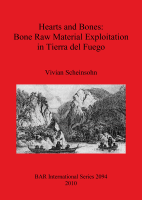Description
BOOK DESCRIPTIONThe intention of this work is to explain how bone was used as a raw material on the Isla Grande de Tierra del Fuego (Argentina). Three main lines of research are followed by the author: 1) The determination of the mechanical properties of bones used for tools; 2) the proposal and evaluation of a model derived from a Darwinian Evolutionary Theory; 3) metric and morphological analysis of Fueguian bone tools. The temporal scale chosen for this work is from the earliest arrival of humans on the island - archaeologically recorded as some 10,000 years bp, up to the 19th century. As a way of approaching this work, and in order to be able to discuss the model which will be proposed in Chapter 6, a history of Bone tool research (with a special focus on Europe, where the main trend in such studies was developed) is presented in Chapter 2. The following chapters are devoted to specifying and analyzing the way in which these factors appear in Tierra del Fuego. Firstly (Chapter 3), the mechanical properties of bone material are referred to. In Chapter 4 the environmental and geological setting of Isla Grande is presented. In Chapter 5 a synthesis of all that is known about the Fuegian populations from an archaeological point of view is presented. Chapter 6 develops the theoretical framework used for the study. A bone raw material model is discussed and methods and materials employed are discussed in Chapter 7. Chapter 8 gives results of the determination of mechanical properties of Tierra del Fuego bones. Chapter 9 gives the results of tool morphological analysis, and Chapter 10 discusses these results. Conclusions and further paths for research follow in Chapter 11.











